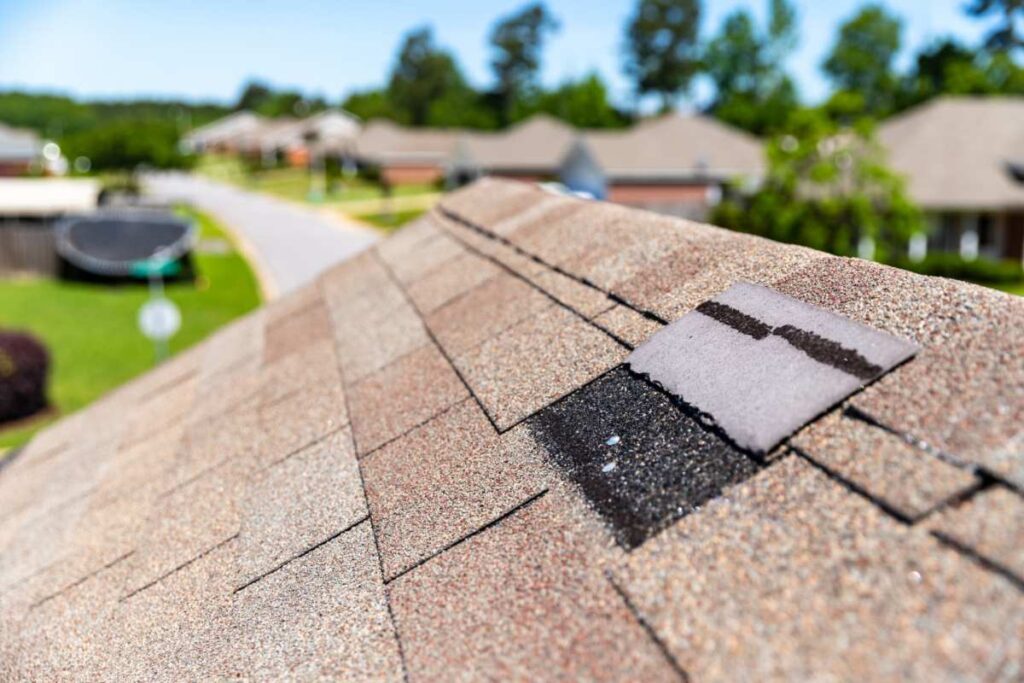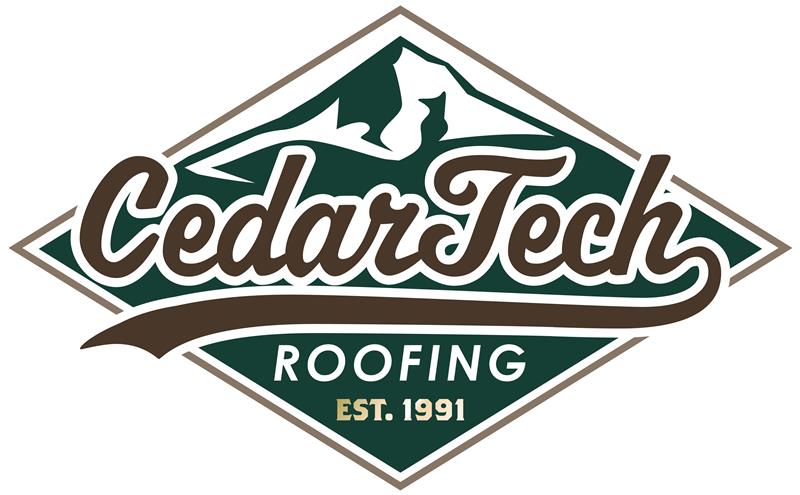What Does Wind Damage Look Like on Shingles?
Repairing Wind Damaged Shingles the Right Way
CedarTech Roofing provides tips for wind damaged shingles. Mother Nature reminds us who’s in charge—and your roof often bears the brunt of her moods. When strong winds sweep through your neighborhood, your shingles can take a beating that isn’t always immediately obvious from ground level. Understanding how to spot wind damaged shingles can save you from costly repairs and protect your home properly. Continue reading below to learn how to prevent severe damage to your home.

Why Addressing Wind Damage Is Important
Your roof is your home’s first line of defense against the elements. When wind damage to roof shingles goes unaddressed, minor problems quickly snowball into major headaches. What starts as a lifted shingle can become a leak, and what begins as a minor leak can lead to water damage, mold growth, and structural issues that cost thousands to repair. Wind damage also compromises your roof’s ability to protect against future storms. Each damaged shingle creates a weak point where wind can get underneath and cause even more damage. It’s like having a small tear in an umbrella—it might keep you mostly dry at first, but that tear will only get bigger with each use.
What Are the Signs of Wind Damage on Shingles?
Learning how to spot wind damaged shingles starts with knowing what to look for. Wind damage shingles can exhibit several telltale signs:
- Missing shingles or granules: This is the most obvious sign. You might find shingles in your yard or notice bare spots where granules have been blown away on your roof.
- Lifted or curled shingles: Wind can lift the edges of shingles, creating gaps where water can penetrate. These lifted areas often stay raised even after the wind dies down.
- Creased or bent shingles: Wind creased shingles occur when strong gusts fold shingles back on themselves, creating permanent creases that weaken the material.
- Exposed nail heads: When shingles shift or lift, the nails holding them down can become exposed, creating potential entry points for water.
- Damaged flashing: The metal strips around chimneys, vents, and roof edges are particularly vulnerable to wind damage.
- Gutters with granules: Finding excessive granules in your gutters after a storm often indicates wind damage has occurred somewhere on your roof.
What Happens If I Don’t Have Them Repaired?
Ignoring wind damage to shingles is like ignoring a small cavity. The problem only worsens with time if you don’t schedule a repair. Here’s what you can expect if repairs are delayed:
- Water infiltration: Damaged shingles allow water to seep through, leading to rot in the underlying wood structure and potential mold growth in your attic and walls.
- Increased energy costs: Compromised shingles reduce your roof’s insulating properties, making your HVAC system work harder to maintain comfortable temperatures.
- Progressive damage: Each storm will cause additional damage to already weakened areas, accelerating the deterioration of your entire roof system.
- Interior damage: What starts on your roof can quickly spread to ceilings, walls, flooring, and personal belongings inside your home.
- Reduced home value: A damaged roof is a red flag for potential buyers and can significantly impact your home’s resale value.
Ways to Prevent Wind Damage
While you can’t control the weather, you can take steps to make your roof more wind-resistant. Consider the following ways you can prevent damage to your shingles:
- Regular inspections: Inspect your roof at least twice yearly and after significant storms. Early detection prevents small issues from becoming big problems.
- Proper installation: Ensure shingles are installed according to manufacturer specifications with adequate nailing patterns and overlap.
- Trim nearby trees: Remove branches that could fall on your roof or scrape against shingles during high winds.
- Upgrade materials: Consider impact-resistant shingles designed to withstand severe weather conditions.
- Maintain gutters: Clean gutters prevent water backup that can loosen shingles and make them more susceptible to wind damage.
Will Home Insurance Cover the Damage?
The good news is that most homeowner’s insurance policies cover wind damage, including wind damage to shingles, as long as the damage resulted from a covered weather event. However, coverage can be tricky to navigate. Insurance companies typically cover sudden, accidental damage, but may deny claims if they determine the damage resulted from poor maintenance or normal wear and tear. To improve your chances of coverage, document the damage with photos, keep records of regular roof maintenance, and file your claim promptly after discovering the damage. Having a professional roofing contractor assess and document the damage can also strengthen your claim.
Don’t Let Wind Damage Blow Your Budget
Wind damage to roof shingles is a serious issue that requires prompt attention. While spotting the signs of damage is essential, having a professional inspection is the best way to ensure your roof remains in top condition. Our experienced team at CedarTech Roofing can help identify wind damage that might not be visible from the ground and provide reliable solutions to protect your home. Remember, addressing small problems now prevents major expenses later—and that’s a win for both your home and your wallet. Contact us today for a consultation.
